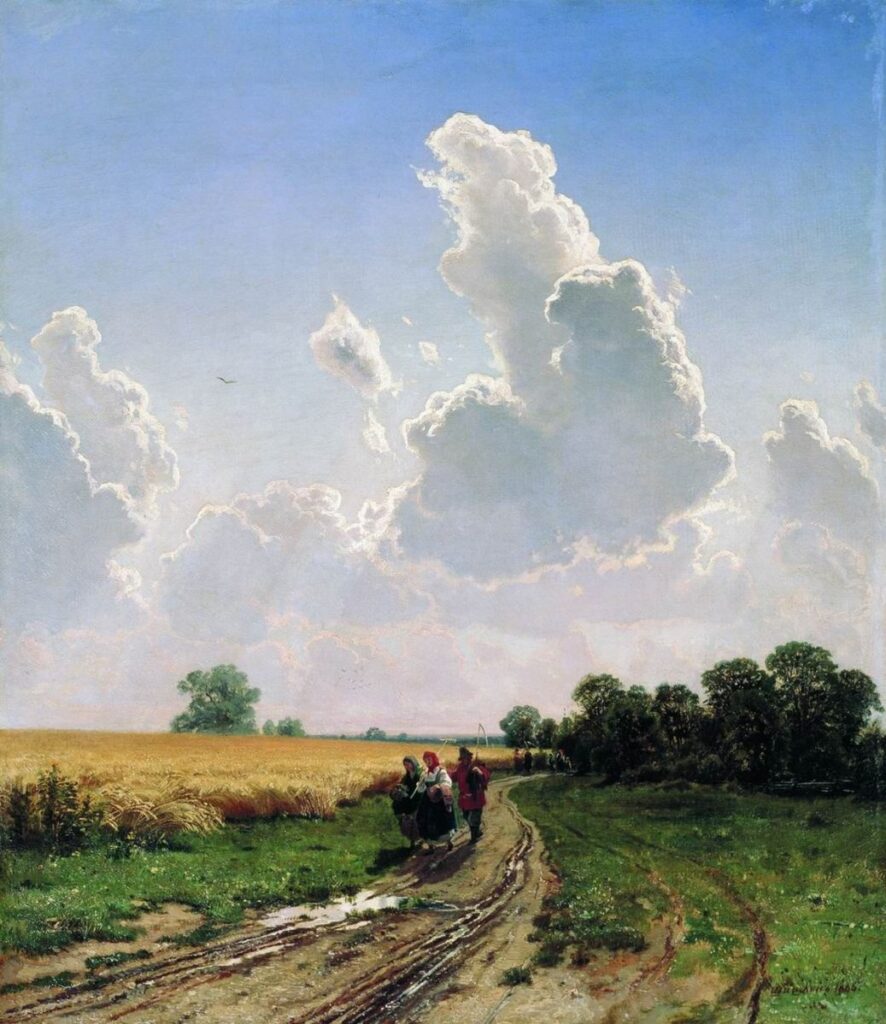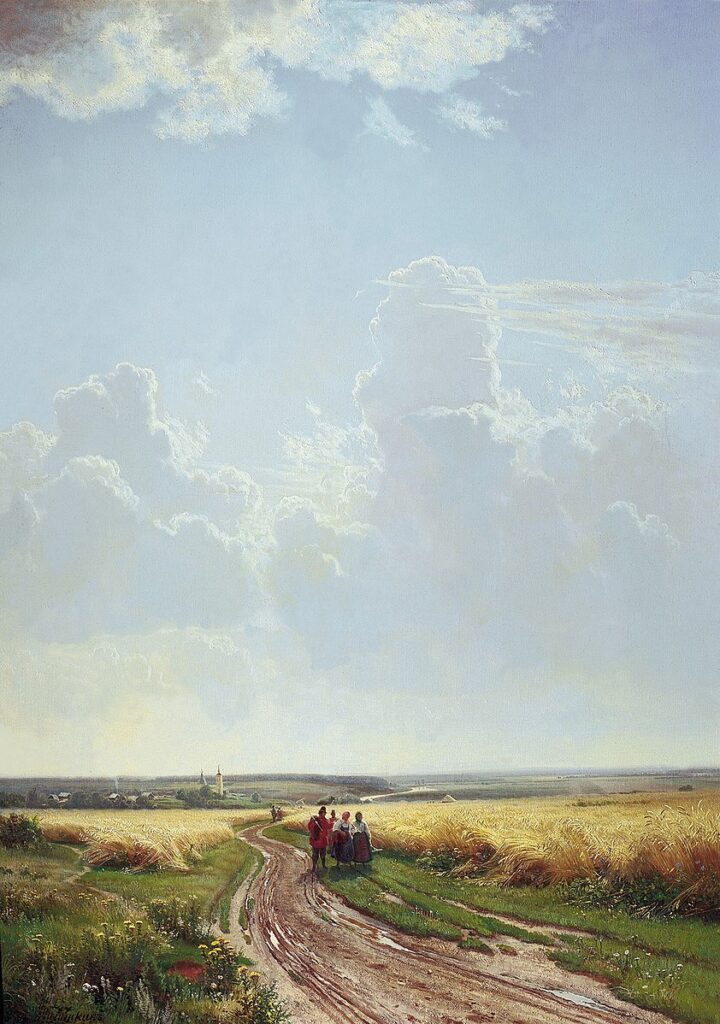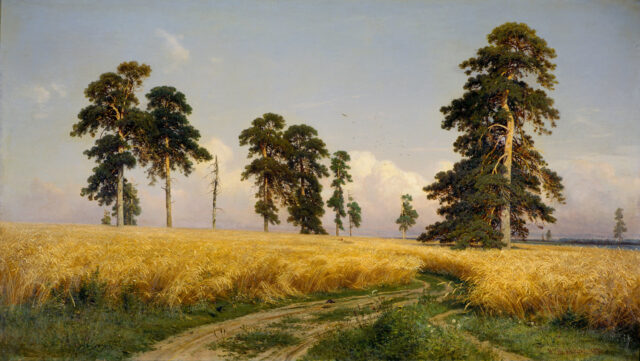

However, it would be wrong to say that Shishkin’s depictions of Russia are close to reality. On the contrary: having developed a great botanical knowledge over the years, Shishkin often deliberately falsely applies it. This is best seen in one of his most famous works “Rye” (1878) in which he paints tall pine trees amid a field of rye, (a pairing said to be impossible by the botanists). From such instances, many art critics infer that Shishkin, rather than simply portraying the beauty of the landscape, wanted to incorporate something more grand into them. A story unfolds in Shishkin’s “Rye”: seeing a bright scene at first (a fecund land populated by some young, tall and healthy pines), one notices a dry, dead, and lonely pine amid this golden field. While I cannot say whether Shishkin wanted to breathe vitality into the viewers or remind them of the temporality of life, I can say that a close study of his works, especially their details, could improve one’s ability to be sensitive. As I have gotten older, I became more appreciative of subtle surrounding beauty and subtle emotions; instead of dividing all surroundings into good or bad, I’ve learned that life is much more colourful and fulfilling if definitions are allowed to be fluid. Such perspective cannot be switched on easily after years of being taught to systematize the surrounding world and to express it in words. Works of Shishkin, as well as of Savrasov and Levitan, in their aim to shift away from the “idyllic” representations of nature towards finding visual ways to convey what words could not express appear to provide a great medium for practicing feeling subtle emotions, ones that may be unimportant in our work and social lives, but are important for our daily enjoyment of our own short lives.
